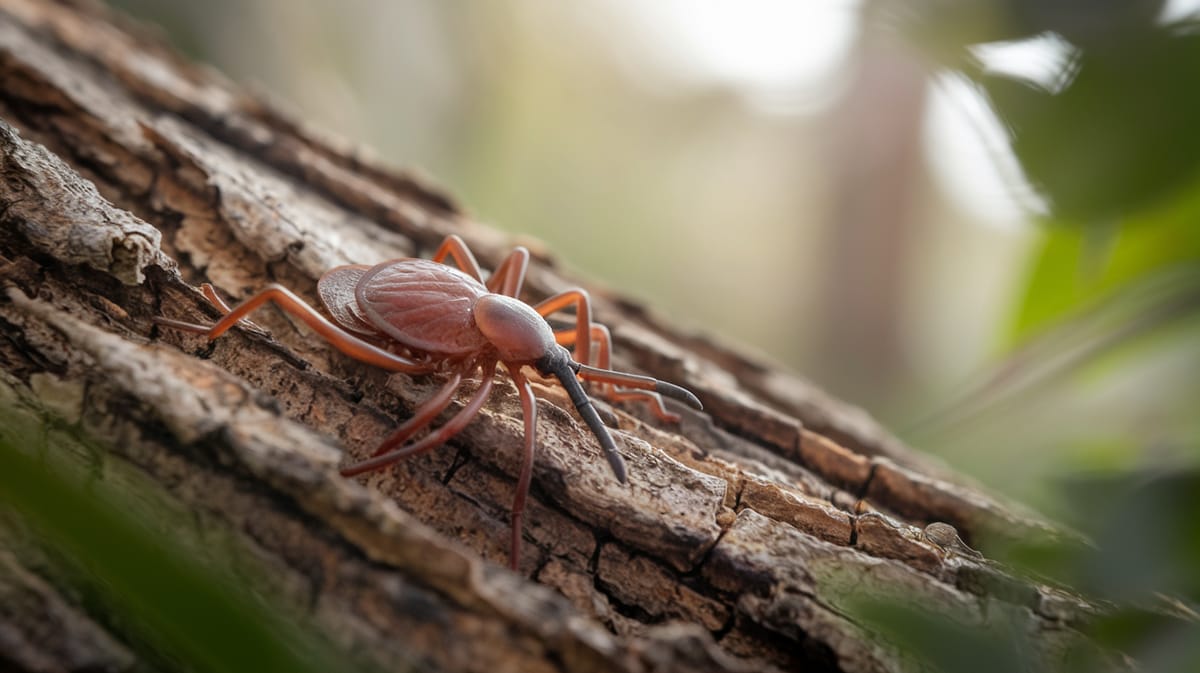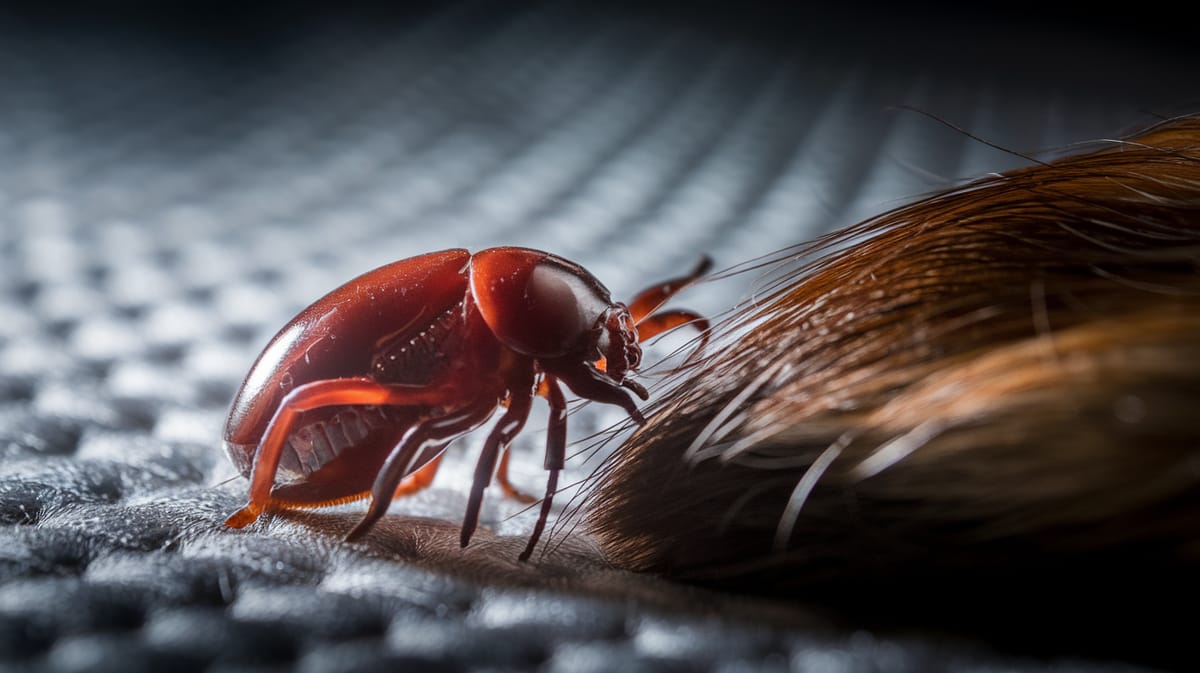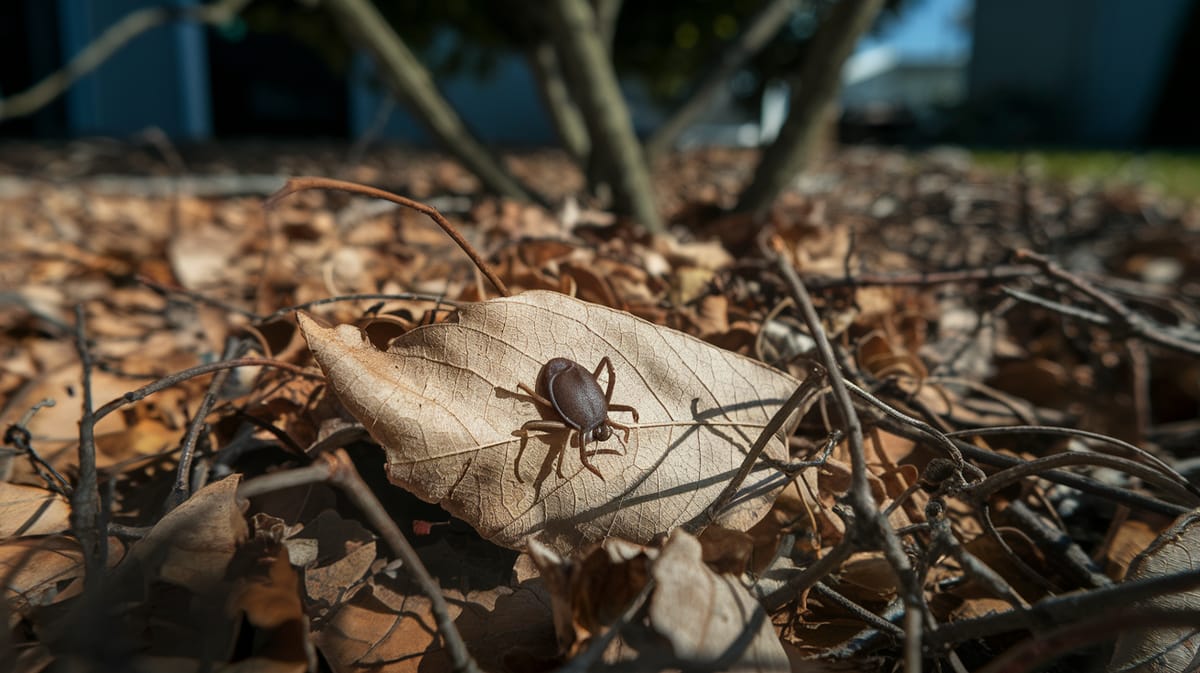Brown Dog Tick
Thriving in diverse environments, the Brown Dog Tick is a resilient arachnid known for its adaptability and role in transmitting diseases to dogs. Preferring warm habitats, it completes its lifecycle indoors.

Key Insights at a Glance
Did You Know?
Taxonomy & Classification
Brown Dog Ticks are resilient ectoparasites, thriving in diverse climates due to their unique ability to adapt to various hosts and environments. Let's understand the evolutionary journey and classification of these remarkable parasites.
Global Presence
Found worldwide, Brown Dog Ticks are unique among ticks for their ability to infest human habitats and adapt to a wide range of climates.
Evolutionary Resilience
Originating in Africa, they have survived and adapted through major climatic shifts, showcasing their evolutionary resilience and adaptability.
Lifecycle and Growth
A remarkable journey of transformation from Egg to Adult.
Egg
Laid in secluded areas, eggs hatch based on environmental conditions, producing larvae ready to find hosts for further development.
Larva
Six-legged larvae feed on a host, dropping off to molt into nymphs, crucial for their survival and progression.
Nymph
Eight-legged nymphs seek hosts for blood meals, necessary for their metamorphosis into adults, showcasing increased mobility.
Adult
Adults engage in feeding and mating, with females laying up to 4000 eggs, ensuring the continuation of their lifecycle.
Dietary Habits
A persistent parasite with specialized feeding strategies, it adapts to feeding on blood from a range of mammalian hosts.
| DIET TYPE | DESCRIPTION |
|---|---|
| Primary Diet | Feeds primarily on dogs, drawing blood to nourish and complete its life cycle. |
| Secondary Diet | Occasionally feeds on other mammals like cats and raccoons when primary hosts are unavailable. |
| Occasional | Rarely targets human hosts, typically when in proximity and primary hosts are scarce. |

Behaviour and Adaptations
Discover the remarkable adaptations that make the Brown Dog Tick a resilient parasite.
Heat Sensitivity
Detects host body heat to locate feeding sites effectively.
Host Attachment
Specialized mouthparts ensure a secure grip on the host.
Drought Resistance
Survives in low-humidity environments due to its robust physiology.
Ecosystem Impact
Brown Dog Ticks contribute to ecological balance by supporting food webs and controlling animal populations.
Food Source for Predators
Serves as a meal for birds and other predators, aiding biodiversity.
Parasite Population Control
Helps regulate populations of small mammals by spreading parasites.
Nutrient Cycling
Contributes to nutrient recycling through host animal waste.
Conservation Challenges
Understanding and addressing the major threats to Brown Dog Tick populations.
Chemical Exposure
Pesticides reduce tick populations and disturb ecosystems.
Habitat Loss
Urbanization reduces suitable habitats for ticks.
Climate Change
Altered weather patterns affect tick distribution and survival.
Frequently Asked Questions
How long do Brown Dog Tick live?
Brown Dog Ticks can live up to two years, depending on environmental conditions and host availability. They go through several life stages: egg, larva, nymph, and adult, needing a blood meal at each stage to progress.
What do Brown Dog Tick eat?
Brown Dog Ticks feed on the blood of mammals, primarily dogs. They attach themselves to their host and ingest blood, which is necessary for their growth and reproduction.
Are Brown Dog Tick poisonous?
Brown Dog Ticks are not poisonous, but they can transmit diseases such as Rocky Mountain spotted fever and ehrlichiosis to dogs and humans. It's important to remove them promptly to minimize disease risk.
Are Brown Dog Tick endangered?
Brown Dog Ticks are not endangered. They are widespread and adapt well to different environments, especially in areas where dogs are present, which serve as their primary hosts.
What do Brown Dog Tick symbolize?
Brown Dog Ticks do not hold any specific symbolic meaning. They are primarily known for their role as parasites and disease vectors affecting dogs and occasionally humans.
Do Brown Dog Tick bite?
Yes, Brown Dog Ticks bite and feed on the blood of their hosts. They attach themselves to the skin of animals, especially dogs, to obtain the necessary nutrients for their development.
What color are Brown Dog Tick?
Brown Dog Ticks are typically reddish-brown in color. When engorged with blood, they can appear darker or even bluish-gray, depending on the amount of blood consumed.
Does a Brown Dog Tick have wings?
No, Brown Dog Ticks do not have wings. They are arachnids, related to spiders and mites, and move by crawling. They rely on host animals for transportation to new environments.
What does a Brown Dog Tick look like?
Brown Dog Ticks are small, flat, and oval-shaped with eight legs. They are reddish-brown, and their size can vary from a few millimeters to over a centimeter when engorged.
Is a Brown Dog Tick an insect?
No, a Brown Dog Tick is not an insect. It is an arachnid, part of the same class as spiders and mites. Unlike insects, ticks have eight legs and no wings or antennae.
Related Insects
Discover insects with similar characteristics to Brown Dog Tick - including shared habitats, diets, and taxonomic classifications
Share this profile
Help others discover Brown Dog Tick
